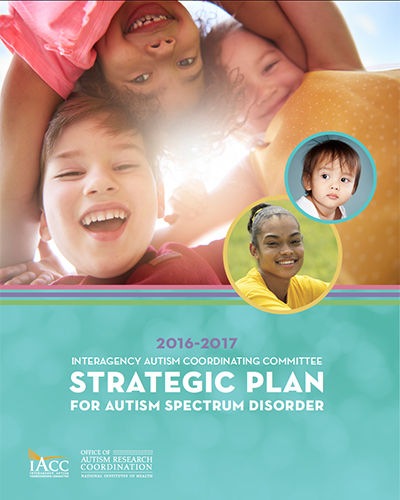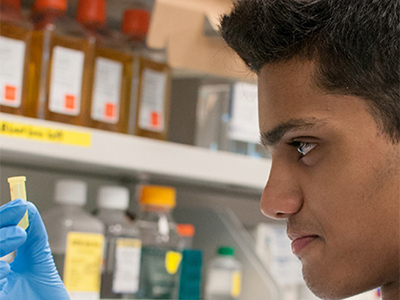IACC Strategic Plan
For Autism Spectrum Disorder
2016-2017
Question 1: How Can I Recognize the Signs of ASD, and Why is Early Detection So Important?
Observational studies of infants at risk for ASD reveal that, although timing of the emergence of ASD features is variable, subtle signs can be detected within the first few years of life. Experienced clinicians who are trained to use validated diagnostic tools can diagnose ASD by 18-24 months of age. Read more.
Question 2: What is the Biology Underlying ASD?
Current scientific evidence suggests that ASD results from subtle alterations during brain development that affect brain structure, function, and connectivity. However, our knowledge about its causes remains incomplete and significant gaps in science have hindered attempts to develop therapies to improve quality of life for individuals with ASD. Read more.
Question 3: What Causes ASD, and Can Disabling Aspects of ASD be Prevented or Preempted?
Since the last Strategic Plan update published in 2013, there have been substantial advances in the understanding of factors that contribute to a diagnosis of autism spectrum disorder. Few would dispute that the causes of ASD are many and include both genetic and environmental factors. Read more.
Question 4: Which Treatments and Interventions Will Help?
The evolution of this Aspirational Goal reflects the progression of priorities in the autism community. Over the past several years, the IACC’s focus has shifted from "preventing disabilities" (2009 IACC Strategic Plan), to encouraging "building adaptive skills" (2013 IACC Strategic Plan Update), and now emphasizes the construction of lifespan approaches and utilization of more meaningful treatment outcomes for individuals living with ASD and their families. Read more.
In previous editions of the IACC Strategic Plan, Question 5 (Services) addressed access and coordination of services for individuals with ASD and their families. Research on services and supports focuses on self-directed care, coordination of funding and services among state and local agencies, community-based supports, and the need to better measure the health, safety, and mortality of people with ASD. Read more.
Each year in the United States, approximately 50,000 individuals with autism spectrum disorder (ASD) turn 18 years old. According to 2016 Centers for Disease Control and Prevention (CDC) data, prevalence of ASD in 8-year-olds rose dramatically from 1 in 150 in 2002 to 1 in 68 in 2012. Read more.
Appropriate research infrastructure is critically important to the success of the IACC Strategic Plan, and progress toward the Aspirational Goal has been rapid over the past 8 years. New databases are being built to leverage recent genetics findings, and efforts to share biospecimens among multiple research efforts are intensifying. Read more.











